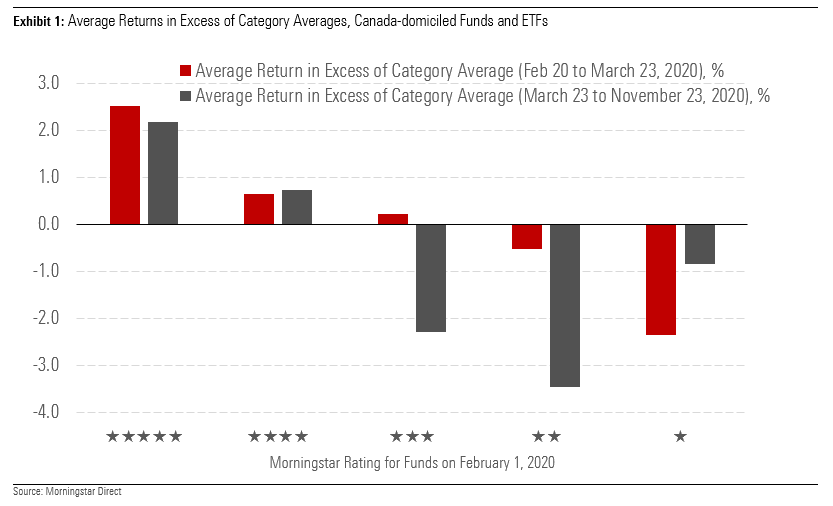
The Morningstar Rating for Funds, often called the Star Rating, is a data-driven rating that measures how well a fund has historically performed compared to similar funds. In Canada, the Star Rating has been around since 1990 and has become a key tool for advisors and investors to start on their fund selection process.
To calculate the Star Rating, Morningstar groups funds into categories based on the kinds of investments they hold - allowing an apples-to-apples comparison. Funds with at least a 3-year record will receive a rating of 1 to 5 stars. All else equal, funds that have beaten most of their peers will receive 4 and 5 stars, while funds that have underperformed will receive 1 or 2 stars. The rating also considers how much risk a fund has taken to achieve its return. A more volatile fund will generally receive a lower rating than a steadier fund that has achieved the same return.
We stress that investors should not use the Star Ratings in isolation, because the Star rating is only based on past performance. Past performance does not guarantee future returns.
Put to the Test
Having said that, how did the Star Ratings do in the coronavirus pandemic, a time of extreme turbulence and volatility? Morningstar Canada’s director of investment research Ian Tam recently released a paper that addressed this.
To isolate performance over the last decade Tam took a snapshot of ratings across 4730 funds as they appeared on November 1, 2010, and observed the ratings of the same funds on October 31, 2020, a full decade later with no overlapping of performance history.

“During the pandemic sell-off, 5-star funds on average outperformed their peers by 2.52% while 1-star funds underperformed peers by 2.35% a clear indication that managers who performed well prior to the pandemic sell-off continued to outperform, while poor-performing funds continued to perform poorly relative to peers. In the eight-month period commencing March 23, 2020, the performance of the same set of funds again sort monotonically with the exception of 1-star funds which have outperformed both 2 and 3-star funds,” Tam found.

He found that the pattern held true for both equity and fixed income asset classes individually. He also founds that roughly 33.1% of 5-star funds either remained as 5-star funds or moved down to a 4-star rating implying that they continued to outperform peers after fees. This was found to be in stark contrast to the funds that were rated 1-star in 2010, of which only 10% went on to outperform peers in the following 10 years.
“We also found that 58.7% of 1-star funds were liquidated or merged whereas only 26.6% of 5-star funds were liquidated or merged. Put in other words, over the last decade, a 1-star fund was more than twice as likely to be liquidated or merged than a 5-star fund,” Tam said.








.jpg)











